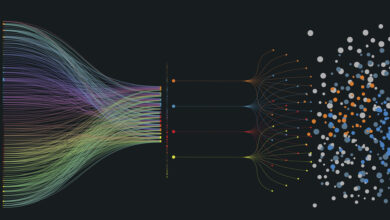AI Security
-
A (Very) Brief History of AI
As early as the mid-19th century, Charles Babbage and Ada Lovelace created the Analytical Engine, a mechanical general-purpose computer. Lovelace is often credited with the idea of a machine that could manipulate symbols in accordance with rules and that it…
Read More » -
Understanding and Addressing Biases in Machine Learning
While ML offers extensive benefits, it also presents significant challenges, among them, one of the most prominent ones is biases in ML models. Bias in ML refers to systematic errors or influences in a model's predictions that lead to unequal…
Read More » -
Adversarial Attacks: The Hidden Risk in AI Security
Adversarial attacks specifically target the vulnerabilities in AI and ML systems. At a high level, these attacks involve inputting carefully crafted data into an AI system to trick it into making an incorrect decision or classification. For instance, an adversarial…
Read More » -
Gradient-Based Attacks: A Dive into Optimization Exploits
Gradient-based attacks refer to a suite of methods employed by adversaries to exploit the vulnerabilities inherent in ML models, focusing particularly on the optimization processes these models utilize to learn and make predictions. These attacks are called “gradient-based” because they…
Read More » -
Introduction to AI-Enabled Disinformation
In recent years, the rise of artificial intelligence (AI) has revolutionized many sectors, bringing about significant advancements in various fields. However, one area where AI has presented a dual-edged sword is in information operations, specifically in the propagation of disinformation.…
Read More » -
The Unseen Dangers of GAN Poisoning in AI
GAN Poisoning is a unique form of adversarial attack aimed at manipulating Generative Adversarial Networks (GANs) during their training phase; unlike traditional cybersecurity threats like data poisoning or adversarial input attacks, which either corrupt training data or trick already-trained models,…
Read More » -
“Magical” Emergent Behaviours in AI: A Security Perspective
Emergent behaviours in AI have left both researchers and practitioners scratching their heads. These are the unexpected quirks and functionalities that pop up in complex AI systems, not because they were explicitly trained to exhibit them, but due to the…
Read More » -
How Dynamic Data Masking Reinforces Machine Learning Security
Data masking, also known as data obfuscation or data anonymization, serves as a crucial technique for ensuring data confidentiality and integrity, particularly in non-production environments like development, testing, and analytics. It operates by replacing actual sensitive data with a sanitized…
Read More » -
How Label-Flipping Attacks Mislead AI Systems
Label-flipping attacks refer to a class of adversarial attacks that specifically target the labeled data used to train supervised machine learning models. In a typical label-flipping attack, the attacker changes the labels associated with the training data points, essentially turning…
Read More » -
Backdoor Attacks in Machine Learning Models
Backdoor attacks in the context of Machine Learning (ML) refer to the deliberate manipulation of a model's training data or its algorithmic logic to implant a hidden vulnerability, often referred to as a "trigger." Unlike typical vulnerabilities that are discovered…
Read More » -
Perturbation Attacks in Text Classification Models
Text Classification Models are critical in a number of cybersecurity controls, particularly in mitigating risks associated with phishing emails and spam. However, the emergence of sophisticated perturbation attacks poses substantial threats, manipulating models into erroneous classifications and exposing inherent vulnerabilities.…
Read More » -
How Multimodal Attacks Exploit Models Trained on Multiple Data Types
In simplest terms, a multimodal model is a type of machine learning algorithm designed to process more than one type of data, be it text, images, audio, or even video. Traditional models often specialize in one form of data; for…
Read More » -
The Threat of Query Attacks on Machine Learning Models
Query attacks are a type of cybersecurity attack specifically targeting machine learning models. In essence, attackers issue a series of queries, usually input data fed into the model, to gain insights from the model's output. This could range from understanding…
Read More » -
Securing Data Labeling Through Differential Privacy
Differential Privacy is a privacy paradigm that aims to reconcile the conflicting needs of data utility and individual privacy. Rooted in the mathematical theories of privacy and cryptography, Differential Privacy offers quantifiable privacy guarantees and has garnered substantial attention for…
Read More » -
Explainable AI Frameworks
Trust comes through understanding. As AI models grow in complexity, they often resemble a "black box," where their decision-making processes become increasingly opaque. This lack of transparency can be a roadblock, especially when we need to trust and understand these…
Read More »














